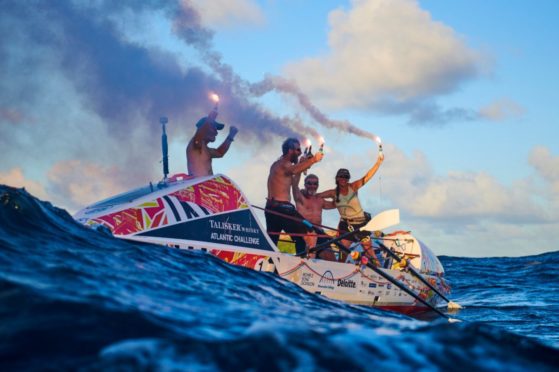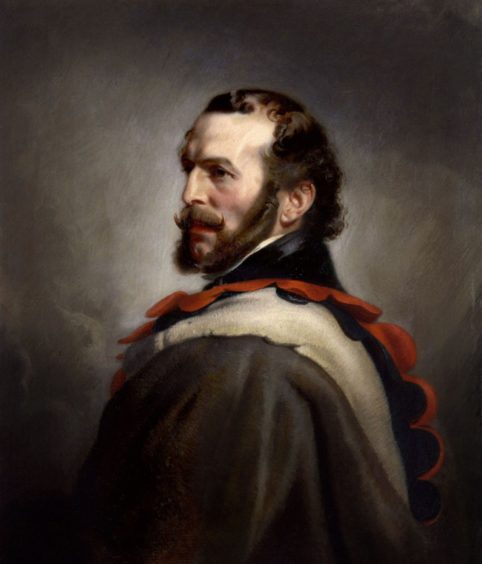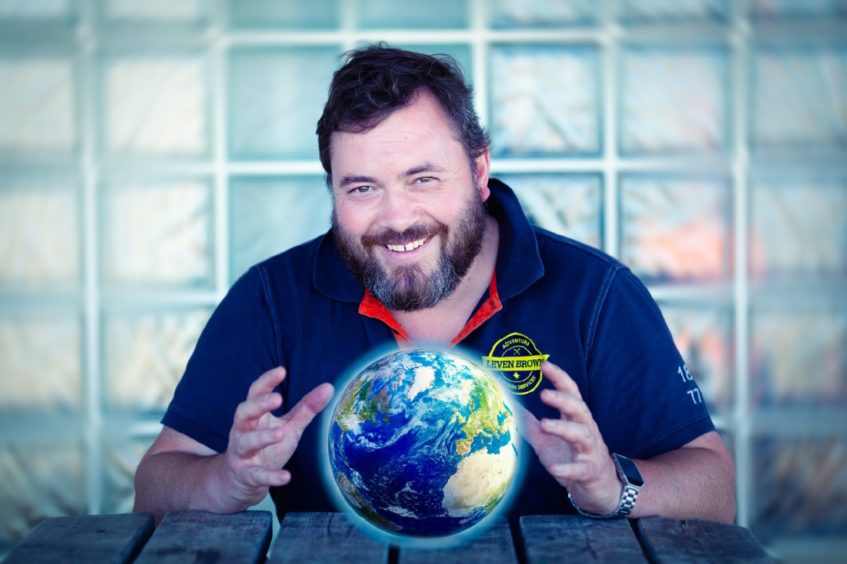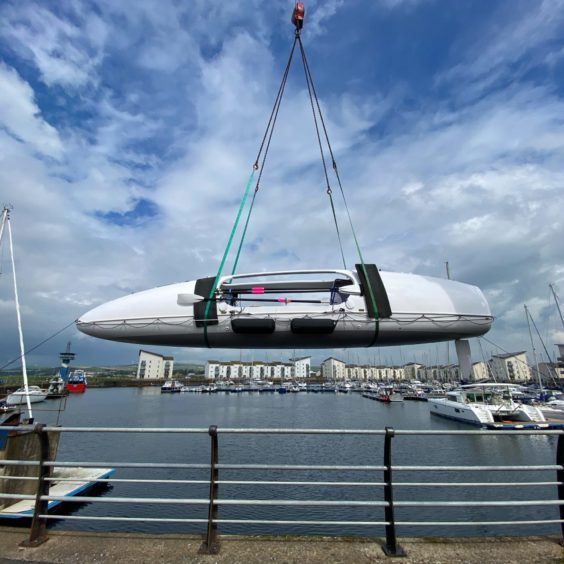
Intrepid Scots rowers are set to attempt to become the first to row an infamously hazardous route through the Arctic Ocean.
They are part of a 15-strong team launching an audacious Northwest Passage expedition, from the Atlantic to the Pacific, which is claimed as one of the world’s “last great firsts”.
Expedition leader and skipper Leven Brown, of Lilliesleaf in the Scottish Borders, has hand-picked an international crew, aged 26 to 64, including experienced Scottish rowers Allan Huntly, Robert Strachan, David Flett, Mark Agnew and Jack Hopkins.
They will row a fleet of three specially designed “ice-class” vessels, costing £200,000 each, on the 2,300-mile journey, starting early June 2021.
The unsupported trip is likely to take three months and among the many dangers will be polar bears, rocks, ice and fierce storms, causing wind speeds of up to 70mph and waves of 60ft.
Despite the expedition taking place in Arctic summer, air temperatures will dip as low as -10C and the duration of human survival in the water will be less than 20 minutes.
There have been three previous failed attempts to row the passage, all in the 21st Century.
It was in the 15th Century that the search for the Northwest Passage, from Pond Inlet in Canada to Kaktovik in Alaska, started as Europeans sought a trade route to Asia.
Over the next centuries, some of the world’s most famous explorers attempted the route, including Sir Francis Drake, Martin Frobisher, Captain Cook, Sir John Franklin and John Ross. They were all foiled by the brutal conditions.
The area was eventually mapped by the Hudson Bay Company and the North West Company, but the existence of a route began to fall into doubt after so many failed attempts.
Then, in the 1860s, Orcadian John Rae hiked overland and found the sea route. Only in 1906 did Norwegian Roald Amundsen finally navigate the Northwest Passage. It took four years to complete the route as the sea froze around him, time and again.
The latest expedition team will require great skill, as well as good fortune, to row the passage in such a challenging and unpredictable environment.
Adventure consultant Leven, 48, who has held five Guinness world records for rowing, said: “It’s never been done before, using human power alone. Others who have tried to row have become lost or stuck in the ice. They have all been forced to give up.
“I have completed six full ocean rows before, including the hugely intimidating North Atlantic and I came away from that crossing thinking we were lucky to finish.
“We will also need luck on our side to get through the Northwest Passage.”
Leven, who is married with a daughter and step-daughter, both aged 14, also believes that rowing east to west might be key to their success.
He said: “The other row attempts have tried to go in the opposite direction and there are reasons for that, such as the fact that the ice will melt sooner in the west.
“But Amundsen sailed the other way and he eventually made it. While we will have the currents against us, we will have prevailing winds with us.
“When rowing, the winds are most important and we are basing our direction on what we know hasn’t worked before and what we know has,” he said.
Leven’s crews have been chosen based on their experience and previous achievements. Allan Huntly, 52, of Bridge of Allan, Stirlingshire, has already shown impressive determination after being told only three years ago he might not be able to exercise, let alone row, again.
The retired firefighter had a slipped vertebrae. He said: “I was in horrendous pain and I could hardly move. At one point, it was thought I would require surgery to have any chance of regaining my physical health.”
Fortunately, a second opinion set him on a more holistic path to recovery, including yoga, chiropractic care, reduced stress, and deep tissue massage.
Amazingly, early last year, he rowed into the world record books as part of the mixed crew that set the fastest time to row 3,000 miles across the Atlantic. Two other members of this crew, Claire Hughes and Phil Kite, both from the north east of England, will be part of the Northwest Passage expedition.
Allan describes the latest rowing opportunity as exciting, although he is aware of the dangers. He said: “I have a very healthy respect for the ocean and what it can throw at you.
“I think my biggest fear is letting down the team by not being able to perform as well as I hope I can. It is going to be very hard.”
The boats, created by former Aston Martin design engineer Ruairi Grimes, have hulls of carbon and kevlar, which are capable of withstanding impacts from rock and ice.
Each craft of five rowers will operate on a brutal schedule of two hours of rowing, two hours of eating and sleeping, plus an hour of keeping watch for ice and bears.
Allan, who is married with two teenage daughters, said: “On these trips you suffer in a new dimension of tiredness and it’s easy to lose track of time. You also have to force yourself to eat.”
Food stocks will be based on the need for each rower to consume 8,000 calories each day. Other vital equipment will be rifles, flashbangs and special sprays in case of encounters with polar bears. Further south, the team may need to protect themselves against grizzlies.
Jack Hopkins, 27, from Inverness and living in London, said: “We’ll be carrying a firearm as a last resort but we are rowing at a time when the bears will be hungry. In fact, due to a loss of their normal environment because of climate change, reports reveal that polar bears are finding it ever harder to source food. We know that being in row boats and close to land we will be vulnerable.”
Environmental issues create conflicting emotions for the team members. Leven explained: “On the one hand, the expedition by rowing has become possible due the sea ice retreating for longer each year and opening the route for more summer months.
“And while we will be proud to become the first to row the passage, if we do it, there will be sadness, too. In a way, it would be better in terms of the environment if we fail because that means the ice is still there.”
The expedition has another mission in partnership with the charity, the Big Blue Ocean Cleanup. The team will collect data for climate scientists, including micro plastic content in the water.
Leven said: “The world’s environment is in peril and the polar regions are experiencing the effects tenfold.
“While we hope our expedition will be a world first for rowers, we also want to draw attention to the changing environment in the Arctic.”
Do you want ice with that?
The Northwest Passage trip is expected to cost £1 million and a new Scottish product, Northwest Passage Expedition Gin, which launches this month, will be sold to raise funds for the effort.
Distilled in Orkney, the gin pays homage to explorer John Rae and includes water from the same source that Captain Cook used to stock his ship on his Northwest Passage attempt.
Team member Jack Hopkins said: “We think gin lovers will be intrigued by the pure, wild tastes of the botanics taken from the shores of Orkney and Hudson Bay in Canada. However, there is one secret ingredient not listed and that is a spirit of adventure.”
Visit nwp2021.com and bigblueoceancleanup.org

Enjoy the convenience of having The Sunday Post delivered as a digital ePaper straight to your smartphone, tablet or computer.
Subscribe for only £5.49 a month and enjoy all the benefits of the printed paper as a digital replica.
Subscribe
 © pennybird and camera
© pennybird and camera